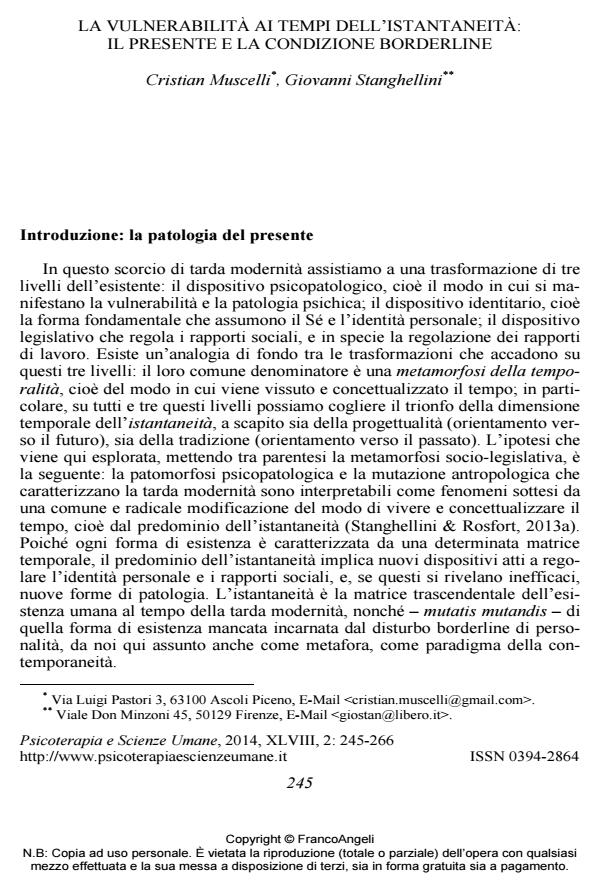Vulnerability in the time of instantaneity. The present and the borderline condition
Journal title PSICOTERAPIA E SCIENZE UMANE
Author/s Cristian Muscelli, Giovanni Stanghellini
Publishing Year 2014 Issue 2014/2
Language Italian Pages 22 P. 245-266 File size 90 KB
DOI 10.3280/PU2014-002003
DOI is like a bar code for intellectual property: to have more infomation
click here
Below, you can see the article first page
If you want to buy this article in PDF format, you can do it, following the instructions to buy download credits

FrancoAngeli is member of Publishers International Linking Association, Inc (PILA), a not-for-profit association which run the CrossRef service enabling links to and from online scholarly content.
The changing way we live and conceptualize time is the key to the understanding a series of transformations that characterize late modernity: the metamorphosis of the psychopathological device, i.e., the way in which mental vulnerability manifests itself, that of the identity device, and of the device that regulates social relations. In this paper the following hypothesis is explored: the psychopathological pathomorphism, the anthropological and socio-cultural mutations that characterize late modernity are interpretable as phenomena related to a common and radical modification of the way of living and conceptualizing time, namely by the predominance of instantaneity.
Keywords: Borderline, instantaneity, immediacy, other, temporality
- Borderline Personality Disorder and the ‘Limit-Situations’: An Ecological and Phenomenological Contribution Jérôme Englebert, in Phainomenon /2018 pp.159
DOI: 10.2478/phainomenon-2018-0014 - Analytical practice: do the new technologies have an impact? Davide Favero, Stefano Candellieri, in Journal of Analytical Psychology /2017 pp.356
DOI: 10.1111/1468-5922.12319
Cristian Muscelli, Giovanni Stanghellini, La vulnerabilità ai tempi dell’istantaneità: il presente e la condizione borderline in "PSICOTERAPIA E SCIENZE UMANE" 2/2014, pp 245-266, DOI: 10.3280/PU2014-002003